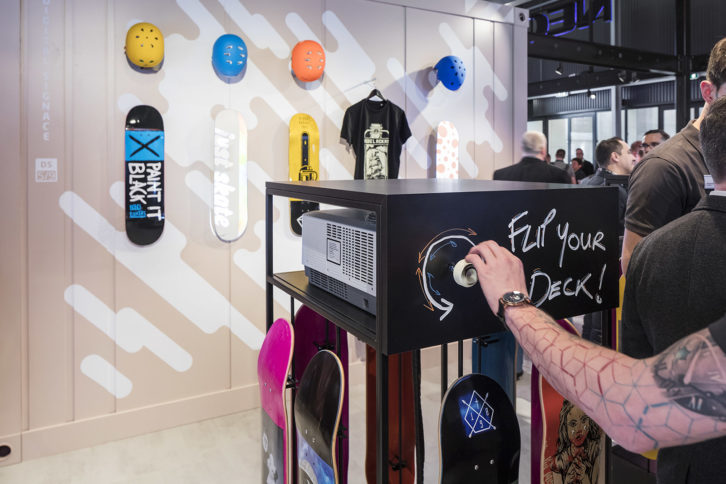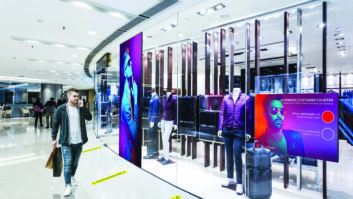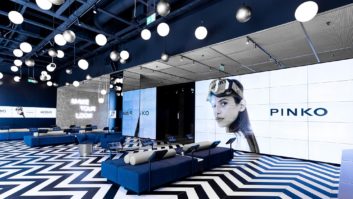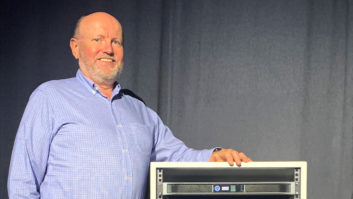
In the first part of this retail feature, we revealed some of the technology solutions that provide additional capabilities for retailers, such as shopper analytics, electronic shelf labelling and stock management to improve operational efficiency. Here Rob Lane considers the arguments that retailers are not innovating in the delivery of technology and that they need to develop their own digital user experiences and understand how users engage with their spaces.
Some believe that retail needs to work harder across the board when it comes to the use of technology, with too many organisations expecting the technology itself to do all of the work when it’s often – with digital signage a particularly good example – a platform for innovative software, rather than a solution in itself.
“Retailers like many other businesses are not really innovating in the delivery of technology,” claims Christian Bozeat director at Macom GmbH UK. “This is due to various factors. AV technology in retail has a number of jobs to do: largely it has to be attractive in order to support the brand and products, and this is driven by design teams and importantly cost. But this means that some displays and solutions being deployed meet the brief in that they are inexpensive and provide a solution to showcase products, but there is often a reduction in quality, causing the brand to be seen in a bad light.
“We see a lot of LED being deployed in stores as it is the current ‘big thing’, but many deployments are not optimal either in forming a quality perspective, installation or performance. We see little strategic thought from retailers in their approach to technology. There is no monitoring of the impact of the different technologies on sales and customer experience: often they are just deployed because it is the thing to do.”
According to Bozeat, retailers need to understand and develop their own digital user experiences, understand how users engage with their spaces, what is it that they need and what is it they enjoy. “Without monitoring and understanding, the full potential of technology cannot be fully met,” he adds. “Of course there are ground-breakers as with every area of business, but many are following and this lengthens the time that it takes for technology to provide the returns and business acceleration that it can.”
The technology certainly exists to help retailers to grow their businesses and stop the decline in the high street – if they don’t just assume that a big display at front-of-store is going to be some sort of panacea.
“I think anything that gives high street retailers the ability to effectively compete with e-tailers will help stop the decline,” says Emma Bigg, director at consultants Octavius RE. “But part of the problem has been the inertia in that sector, and whilst the e-tail environment has rapidly transformed, it’s really taken a while for the more traditional retailers to up their game and address the changes in how consumers purchase goods.”
Bigg sees on-demand manufacturing as having the power to reduce costs and introduce competitiveness – challenging online. “I think we are already seeing on-demand manufacturing coming into its own, driven by the desire to create more unique and personalised experiences. The more sophisticated the technology gets the more you can see how this will transform manufacturing, reduce waste and reduce costs, it’s hard to see why it wouldn’t be deployed more widely.
“The democratisation of the 3D printer and businesses like OnPoint Manufacturing popping up means it is now more feasible for retailers to produce products quickly, efficiently and to a sufficiently high standard. The impact of this could be to reduce waste of unsold stock, reduce manufacturing costs and drive an altogether different kind of customer experience.”
OnPoint Manufacturing can produce individual or small runs of clothing to order. If combined with body scanning technology, then conceivably a retailer could stock all the sizes that its customer base ever needed, reducing manufacturing costs as well as driving customer loyalty. Adidas recently teamed up with Carbon 3D to produce a line of shoes using the company’s Design Light Synthesis process and, according to Bigg these “sold like hot cakes”.
“A key aspect for Adidas was that they could produce numerous prototypes without the labour overhead, and all were of sufficient quality to test the performance of the shoe as well as look at the aesthetics – and all of this could be done much, much faster than using a traditional product development model.”
Optimising space
BOPIS (Buy Online and Pick In Store) technology is also set to allow retailers to optimise their floor space to sell the most popular products. Consumers are increasingly using BOPIS, and Bigg believes that this – combined with voice control ordering via Alexa – could help high street retailers.
“Combine the two for a bricks and mortar retailer and the data that would provide would enable retailers to increase sales whilst reducing physical floor space – if they have a streamlined fulfilment process. Retailers wouldn’t need to hold as much or as wide a variety of physical stock in store, but they’d be able to capture customer searches and previous purchase history to optimise inventory. This would also drive that ‘personalised’ customer experience, whilst again helping to manage stock, manage floor space and maximise ROI.”
The key takeaway from the retail technological (r)evolution is that organisations need to engage and be creative with the tech rather than merely expecting it to do all the work for them. They also need to continue developing what they have, working with AV integrators and consultants to ensure that their investments are delivering on their potential and hitting required ROI.
“In order to successfully provide these integrated services that provide a dynamic and interesting user experience, retailers need to restructure the way they look at technology, how they plan for it and how they design it,” says Bozeat.
Traditional high street retail methodology of course has to change, integrating digital aspects into the physical shopping experience, with AV technology at the forefront of this (r)evolution. But it can’t just be point and shoot.
“It’s not a case of getting these groundbreaking ideas in and then leaving them,” states Steve Blyth, MD at Engage Works. “There has to be continued development and innovation to make sure that the technology keeps up with the needs and wants of consumers.”







